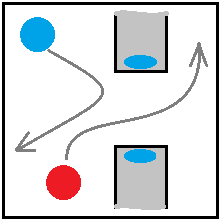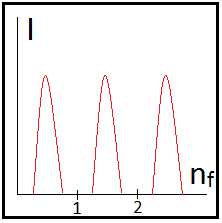Focus
Main research goals include:

Functionalisation of nanopores
How do the parameters of an artificial nanopore -- radius, length, charge distribution, shape, chemical composition -- affect its conductivity and selectivity? What parameters parameters should is possess in order to demonstrate pre-defined desired properties, or to mimic biological ion channels? We develop theoretical methods to answer these questions.

Ionic Coulomb blockade
A phenomenon of the dramatic decrease of channel's conductance revealed at the specific values of selelectvity filter's charge
More detailed information is provided at the links below.
